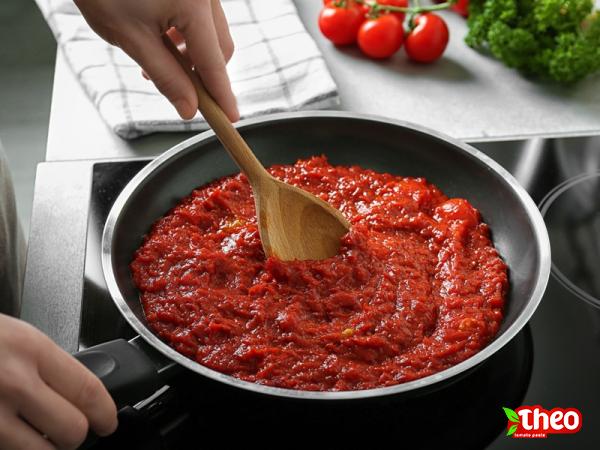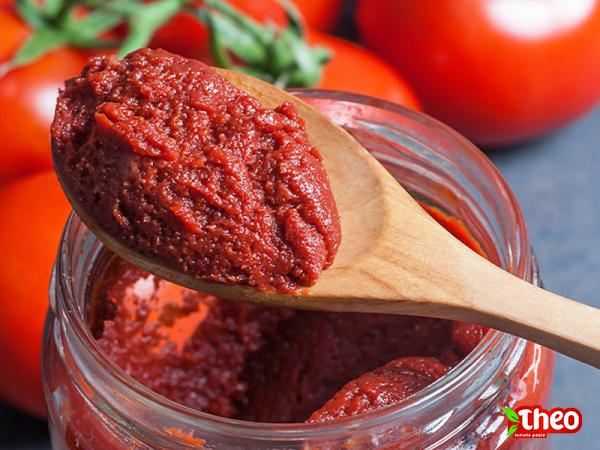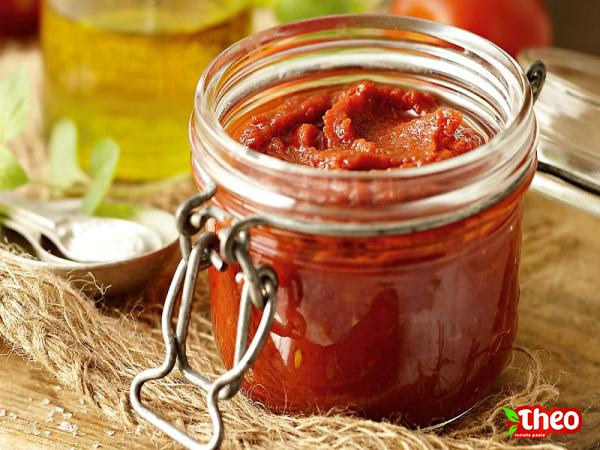Transforming Tomato Paste into Pizza Sauce: A Versatile and Flavorful Journey Introduction: Tomato paste is a concentrated form of tomatoes, typically made by cooking down fresh tomatoes and removing the excess water. While tomato paste is commonly used as a base for various sauces, it can also be transformed into a delicious pizza sauce that adds a burst of flavor to the beloved Italian dish. In this article, we will explore the process of converting tomato paste into pizza sauce, highlighting the key ingredients and techniques required for a mouthwatering outcome. I. Understanding Tomato Paste: 1. Tomato Paste: Tomato paste is a thick and richly flavored product obtained by removing the seeds and skin from the tomatoes, followed by reducing them to a concentrated form. 2. Characteristics: Tomato paste is known for its deep red color, dense consistency, and intense tomato flavor. II. Benefits of Using Tomato Paste as Pizza Sauce: 1. Flavor Enhancer: Tomato paste offers a concentrated burst of rich umami flavor, elevating the taste profile of a pizza. 2. Rich Color and Texture: The vibrant red hue and thicker consistency of tomato paste improve the visual appeal and texture of the pizza sauce. 3. Convenience: Tomato paste is readily available in stores and can be easily stored for extended periods, making it a convenient and long-lasting option for pizza sauce. III. Transforming Tomato Paste into Pizza Sauce: 1. Ingredients: a. Tomato Paste: Choose a high-quality tomato paste that is free from any adulterants or additives. b. Liquid Elements: Water, wine, or broth can be added to tomato paste to achieve the desired consistency and balance the flavors. c. Seasonings: Garlic, onion, basil, oregano, and other herbs and spices can be added to enhance the flavor profile of the pizza sauce. d. Sweetener: A small amount of sugar or honey can be added to offset the acidity of the tomatoes and create a well-rounded flavor. e. Salt and Pepper: Salt and pepper can be added to taste, enhancing the overall seasoning. f. Olive Oil: A drizzle of extra virgin olive oil adds a luxurious touch and enriches the texture of the sauce. 2. Cooking Process: a. Preparing the Tomato Paste: Dilute the tomato paste with the chosen liquid element(s) to achieve the desired consistency. This can be done gradually, while stirring continuously. b. Seasoning the Sauce: Add the desired herbs, spices, and aromatics to the tomato paste mixture and incorporate them well. c. Sweetening and Balancing: Add a small amount of sweetener to balance the acidity of the tomatoes, ensuring a harmonious flavor profile.

tomato paste
 d. Simmering: Bring the sauce to a gentle simmer over low heat and cook for a period of time to allow the flavors to meld together. This allows the sauce to develop its full potential and reach the desired thickness. e. Final Touch: Adjust the salt and pepper levels according to taste preferences and finish off with a drizzle of olive oil for added richness. IV. Variations and Customizations: 1. Spicy Pizza Sauce: Adding crushed red pepper flakes or a dash of hot sauce can create a zesty and fiery pizza sauce. 2. Herb-infused Sauce: Experimenting with a combination of fresh herbs such as basil, oregano, thyme, or rosemary can impart distinct flavors to the sauce. 3. Creamy Tomato Sauce: Incorporating a dollop of heavy cream or melted butter can transform the pizza sauce into a creamy, indulgent delight. V. Application and Storage: 1. Pizza Toppings: Once the sauce is prepared, it can be spread on pizza dough and topped with ingredients of choice before baking. 2. Leftover Sauce: Any leftover pizza sauce can be stored in an airtight container in the refrigerator for up to a week. It can also be frozen for longer-term storage. 3. Versatility: Apart from pizza, the transformed tomato paste can be used as a versatile base for pasta sauces, stews, soups, or even as a dip for appetizers. Conclusion: Transforming tomato paste into a flavorsome pizza sauce requires a few simple steps and a touch of creativity. The concentrated and rich essence of tomato paste enhances the flavors and textures of a pizza, making it an ideal choice for both homemade and professional kitchens. Whether customized with spices, herbs, or even cream, tomato paste-based pizza sauces offer endless possibilities for creating signature dishes. With this knowledge, you can unleash your culinary creativity and master the art of using tomato paste as pizza sauce.I. The Market Potential of Pizza Sauce: The pizza industry has experienced exponential growth in recent years, with pizza consumption continuing to rise globally. As pizza remains a popular and widely loved dish, the demand for quality pizza sauce has also increased. This presents a lucrative market opportunity for businesses involved in the production and distribution of pizza sauces. By offering high-quality pizza sauces made from transformed tomato paste, businesses can tap into this growing market and establish a strong presence in the pizza industry.
d. Simmering: Bring the sauce to a gentle simmer over low heat and cook for a period of time to allow the flavors to meld together. This allows the sauce to develop its full potential and reach the desired thickness. e. Final Touch: Adjust the salt and pepper levels according to taste preferences and finish off with a drizzle of olive oil for added richness. IV. Variations and Customizations: 1. Spicy Pizza Sauce: Adding crushed red pepper flakes or a dash of hot sauce can create a zesty and fiery pizza sauce. 2. Herb-infused Sauce: Experimenting with a combination of fresh herbs such as basil, oregano, thyme, or rosemary can impart distinct flavors to the sauce. 3. Creamy Tomato Sauce: Incorporating a dollop of heavy cream or melted butter can transform the pizza sauce into a creamy, indulgent delight. V. Application and Storage: 1. Pizza Toppings: Once the sauce is prepared, it can be spread on pizza dough and topped with ingredients of choice before baking. 2. Leftover Sauce: Any leftover pizza sauce can be stored in an airtight container in the refrigerator for up to a week. It can also be frozen for longer-term storage. 3. Versatility: Apart from pizza, the transformed tomato paste can be used as a versatile base for pasta sauces, stews, soups, or even as a dip for appetizers. Conclusion: Transforming tomato paste into a flavorsome pizza sauce requires a few simple steps and a touch of creativity. The concentrated and rich essence of tomato paste enhances the flavors and textures of a pizza, making it an ideal choice for both homemade and professional kitchens. Whether customized with spices, herbs, or even cream, tomato paste-based pizza sauces offer endless possibilities for creating signature dishes. With this knowledge, you can unleash your culinary creativity and master the art of using tomato paste as pizza sauce.I. The Market Potential of Pizza Sauce: The pizza industry has experienced exponential growth in recent years, with pizza consumption continuing to rise globally. As pizza remains a popular and widely loved dish, the demand for quality pizza sauce has also increased. This presents a lucrative market opportunity for businesses involved in the production and distribution of pizza sauces. By offering high-quality pizza sauces made from transformed tomato paste, businesses can tap into this growing market and establish a strong presence in the pizza industry.
Specifications of tomato paste
 II. Developing a Unique Selling Proposition: In order to succeed in the competitive market, businesses need to differentiate their pizza sauce offerings by developing a unique selling proposition (USP). This can be achieved by focusing on factors such as flavor profiles, ingredient quality, customization options, and convenience of use. By highlighting these unique aspects, businesses can attract customers who are looking for exceptional pizza sauce options that go beyond standard store-bought varieties. III. Sourcing Quality Tomato Paste: The quality of tomato paste used as a base for pizza sauce is crucial in determining the final product’s taste and texture. Businesses should focus on sourcing high-quality tomato paste that is made from ripe, flavorful tomatoes without any artificial additives or preservatives. Partnering with reliable suppliers and conducting regular quality checks will ensure that the tomato paste used meets the desired standards and provides a superior pizza sauce. IV. Leveraging Flavor Enhancers: While tomato paste alone offers a robust tomato flavor, businesses can enhance the taste profile of their pizza sauces by incorporating flavor enhancers. This can include the use of fresh herbs, spices, and aromatics to add depth and complexity to the sauce. Additionally, experimenting with unique ingredients like roasted garlic, sun-dried tomatoes, or even infused oils can provide a distinctive flavor experience that sets a business’s pizza sauce apart from competitors’. V. Streamlining Production Processes: Efficient production processes are crucial for businesses aiming to meet the demands of the pizza industry. Streamlining the processes involved in transforming tomato paste into pizza sauce can ensure consistent quality and timely deliveries. Investing in modern equipment, optimizing workflows, and implementing quality control measures will help increase productivity, reduce costs, and maintain a competitive edge in the market. VI. Packaging and Branding Strategies: Packaging plays a vital role in the presentation and marketability of pizza sauces. Eye-catching and informative packaging designs can attract consumers and communicate the product’s quality. Moreover, incorporating branding elements, such as a distinctive logo and brand colors, will help create brand recognition and enhance market presence. Offering various packaging sizes, from single-use sachets to larger bottles or cans, will cater to different consumer preferences and usage scenarios. VII. Catering to Health-conscious Consumers: As more consumers are becoming health-conscious, businesses can capitalize on this by offering healthier pizza sauce options. This can be achieved by utilizing natural ingredients, reducing sodium content, and avoiding artificial additives. Additionally, highlighting the nutritional benefits of the sauce, such as its rich lycopene content, can further appeal to health-conscious consumers looking for guilt-free pizza options.
II. Developing a Unique Selling Proposition: In order to succeed in the competitive market, businesses need to differentiate their pizza sauce offerings by developing a unique selling proposition (USP). This can be achieved by focusing on factors such as flavor profiles, ingredient quality, customization options, and convenience of use. By highlighting these unique aspects, businesses can attract customers who are looking for exceptional pizza sauce options that go beyond standard store-bought varieties. III. Sourcing Quality Tomato Paste: The quality of tomato paste used as a base for pizza sauce is crucial in determining the final product’s taste and texture. Businesses should focus on sourcing high-quality tomato paste that is made from ripe, flavorful tomatoes without any artificial additives or preservatives. Partnering with reliable suppliers and conducting regular quality checks will ensure that the tomato paste used meets the desired standards and provides a superior pizza sauce. IV. Leveraging Flavor Enhancers: While tomato paste alone offers a robust tomato flavor, businesses can enhance the taste profile of their pizza sauces by incorporating flavor enhancers. This can include the use of fresh herbs, spices, and aromatics to add depth and complexity to the sauce. Additionally, experimenting with unique ingredients like roasted garlic, sun-dried tomatoes, or even infused oils can provide a distinctive flavor experience that sets a business’s pizza sauce apart from competitors’. V. Streamlining Production Processes: Efficient production processes are crucial for businesses aiming to meet the demands of the pizza industry. Streamlining the processes involved in transforming tomato paste into pizza sauce can ensure consistent quality and timely deliveries. Investing in modern equipment, optimizing workflows, and implementing quality control measures will help increase productivity, reduce costs, and maintain a competitive edge in the market. VI. Packaging and Branding Strategies: Packaging plays a vital role in the presentation and marketability of pizza sauces. Eye-catching and informative packaging designs can attract consumers and communicate the product’s quality. Moreover, incorporating branding elements, such as a distinctive logo and brand colors, will help create brand recognition and enhance market presence. Offering various packaging sizes, from single-use sachets to larger bottles or cans, will cater to different consumer preferences and usage scenarios. VII. Catering to Health-conscious Consumers: As more consumers are becoming health-conscious, businesses can capitalize on this by offering healthier pizza sauce options. This can be achieved by utilizing natural ingredients, reducing sodium content, and avoiding artificial additives. Additionally, highlighting the nutritional benefits of the sauce, such as its rich lycopene content, can further appeal to health-conscious consumers looking for guilt-free pizza options.
buy tomato paste
 VIII. Building Strong Partnerships: Collaborating with key players in the pizza industry, such as pizzerias, food delivery services, or frozen pizza manufacturers, can significantly expand the reach and distribution channels for pizza sauce products. Building strong partnerships and offering tailored solutions to these businesses can drive sales and create mutually beneficial relationships. Additionally, conducting regular market research to identify emerging trends and consumer preferences will keep businesses ahead of the curve and allow them to cater to evolving market demands. IX. Marketing and Promotional Strategies: In order to successfully penetrate the market, businesses need to invest in effective marketing and promotional strategies. This can include online and offline advertising campaigns, social media outreach, partnerships with influencers or food bloggers, and participation in food-related events or trade shows. Furthermore, offering tastings and samples to potential buyers can help generate word-of-mouth buzz and encourage trial purchases. X. Ensuring Food Safety and Compliance: Maintaining high standards of food safety and compliance is essential for businesses operating in the food industry. This includes adhering to proper hygiene practices, obtaining necessary certifications, and complying with local regulations and licensing requirements. Implementing robust quality control measures throughout the production and distribution processes will ensure that the pizza sauce products meet safety standards and consumer expectations. XI. Expanding Product Range: To further diversify their offerings and cater to broader customer preferences, businesses can expand their product range beyond traditional pizza sauces. This can include the development of specialty sauces, such as spicy or gourmet variants, as well as introducing complementary products like pizza dough or pre-made pizza kits. Offering a range of pizza-related products will not only appeal to different customer segments but also provide additional revenue streams for the business. XII. Staying Ahead with Innovation: Innovation plays a vital role in staying ahead in the competitive pizza sauce market. Constantly exploring new flavors, incorporating trending ingredients, and experimenting with unique packaging formats can keep a business’s pizza sauce offerings fresh and exciting. Additionally, keeping up with technological advancements and consumer insights will allow businesses to adapt their strategies and products to changing market needs, ensuring long-term success. Conclusion: Transforming tomato paste into pizza sauce opens up a world of possibilities for businesses in the pizza industry. By understanding the market potential, developing a unique selling proposition, sourcing quality ingredients, streamlining production processes, and implementing effective marketing strategies, businesses can thrive in this competitive market. With a focus on innovation and catering to consumer preferences, pizza sauce businesses can establish themselves as leaders in the industry and satisfy the growing demand for delicious and versatile pizza sauces.
VIII. Building Strong Partnerships: Collaborating with key players in the pizza industry, such as pizzerias, food delivery services, or frozen pizza manufacturers, can significantly expand the reach and distribution channels for pizza sauce products. Building strong partnerships and offering tailored solutions to these businesses can drive sales and create mutually beneficial relationships. Additionally, conducting regular market research to identify emerging trends and consumer preferences will keep businesses ahead of the curve and allow them to cater to evolving market demands. IX. Marketing and Promotional Strategies: In order to successfully penetrate the market, businesses need to invest in effective marketing and promotional strategies. This can include online and offline advertising campaigns, social media outreach, partnerships with influencers or food bloggers, and participation in food-related events or trade shows. Furthermore, offering tastings and samples to potential buyers can help generate word-of-mouth buzz and encourage trial purchases. X. Ensuring Food Safety and Compliance: Maintaining high standards of food safety and compliance is essential for businesses operating in the food industry. This includes adhering to proper hygiene practices, obtaining necessary certifications, and complying with local regulations and licensing requirements. Implementing robust quality control measures throughout the production and distribution processes will ensure that the pizza sauce products meet safety standards and consumer expectations. XI. Expanding Product Range: To further diversify their offerings and cater to broader customer preferences, businesses can expand their product range beyond traditional pizza sauces. This can include the development of specialty sauces, such as spicy or gourmet variants, as well as introducing complementary products like pizza dough or pre-made pizza kits. Offering a range of pizza-related products will not only appeal to different customer segments but also provide additional revenue streams for the business. XII. Staying Ahead with Innovation: Innovation plays a vital role in staying ahead in the competitive pizza sauce market. Constantly exploring new flavors, incorporating trending ingredients, and experimenting with unique packaging formats can keep a business’s pizza sauce offerings fresh and exciting. Additionally, keeping up with technological advancements and consumer insights will allow businesses to adapt their strategies and products to changing market needs, ensuring long-term success. Conclusion: Transforming tomato paste into pizza sauce opens up a world of possibilities for businesses in the pizza industry. By understanding the market potential, developing a unique selling proposition, sourcing quality ingredients, streamlining production processes, and implementing effective marketing strategies, businesses can thrive in this competitive market. With a focus on innovation and catering to consumer preferences, pizza sauce businesses can establish themselves as leaders in the industry and satisfy the growing demand for delicious and versatile pizza sauces.




